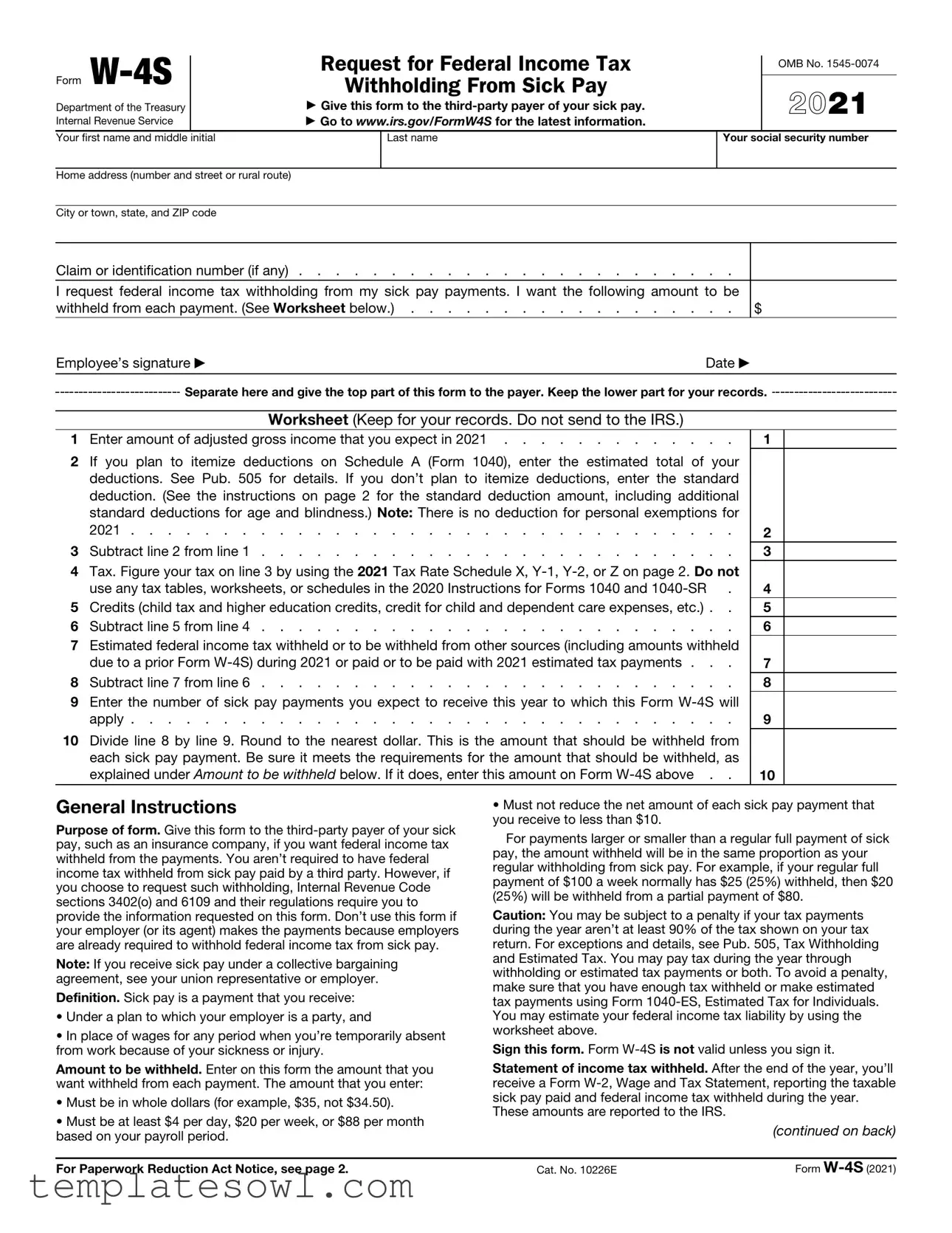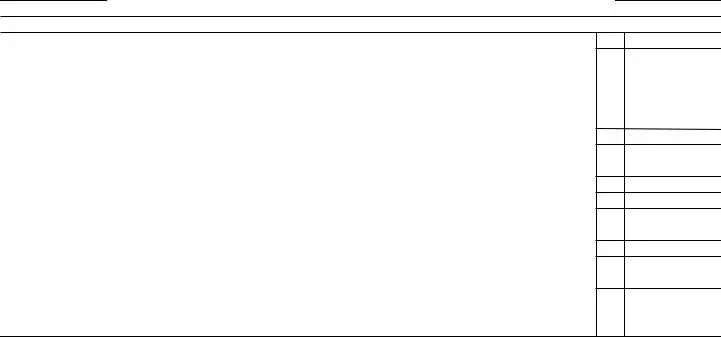What is Form W-4S?
Form W-4S is a request for federal income tax withholding from sick pay payments. It is specifically intended for individuals who receive sick pay from a third-party payer, such as an insurance company. By submitting this form, you can indicate how much tax you wish to have withheld from your sick pay.
Who should use Form W-4S?
This form is for individuals who receive sick pay that is not subject to automatic federal income tax withholding. If your employer is paying your sick pay, you should not use this form, as they are already required to withhold taxes from your wages.
How do I complete Form W-4S?
To complete Form W-4S, you will need to provide your personal information, including your name, Social Security number, and address. You will also need to specify the amount you want withheld from each sick pay payment. Calculating this amount may require using the worksheet included with the form to estimate your tax liability for the year.
What amount can I choose to withhold from my sick pay?
The amount you choose to withhold must be in whole dollars and can vary based on your payroll period. The minimum withholding is $4 per day, $20 per week, or $88 per month. Importantly, the net amount of each sick pay payment must not fall below $10 after withholding.
Do I need to recalculate my withholding amount?
Yes, if any of the amounts on the worksheet change after you submit Form W-4S, you should fill out a new form to adjust your withholding. This is important to ensure that your withholding aligns with your current financial situation.
What happens after I submit Form W-4S?
After you submit the form to your sick pay payer, the payer is responsible for withholding the specified tax amount from your sick pay. At the end of the year, you will receive a Form W-2 reporting the total sick pay received and the tax withheld, which you will need for your tax return.
Can I change my withholding amount later?
You can change or revoke your withholding request at any time by submitting a new Form W-4S. To revoke your previous request, fill out the new form and write “Revoked” in the amount box.
Is there a penalty for incorrect withholding?
If the total tax withheld from your income does not meet the required percentage of your tax liability for the year, you may be subject to penalties. Ensuring that adequate tax is withheld or making estimated tax payments can help avoid this situation.
Where can I find more information about Form W-4S?
For the most current information regarding Form W-4S and related tax regulations, visit the IRS website at www.irs.gov/FormW4S. This site offers guidance on completing the form and understanding tax withholding.


